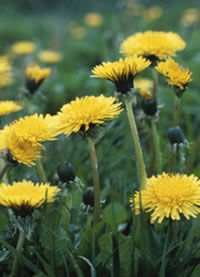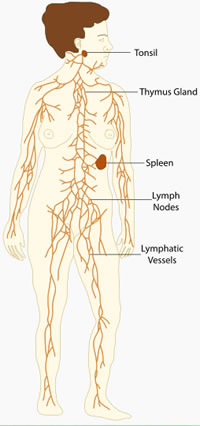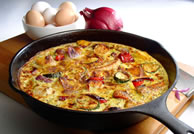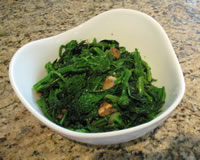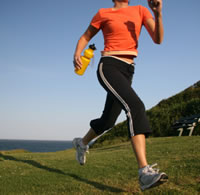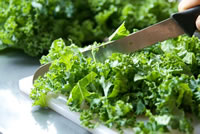
Kale Salad
I met a really interesting couple at The Crow’s Nest last night (yes, I’m predictable – on Sundays we have supper out so that’s why there’s no Day 12) who had lots of questions about the importance of detoxing, so I thought I’d do my blog today on why a spring detox is a healthful practice.
What are toxins?
Toxins are substances that are harmful to our health. There are two main categories: Exotoxins – toxins which enter into our bodies from our external environments; and Endotoxins – toxic by-products of internal bodily functions.
Exotoxins include such things as xenobiotics (insecticides, herbicides, pesticides, food additives, plastics, drugs, chemicals from cleaning supplies, etc.), toxic metals (lead, cadmium, mercury, aluminum, arsenic in our water, fish, lead pipes, paint, pots and other sources), organic toxins (aflatoxin, penicillium toxins on our food), vitamin and mineral excesses, infections, lifestyle toxins (caffeine, sugar, alcohol, smoking), inhalents (mold, algae, pollens), food sensitivities (gluten, dairy, nightshades), and energetic toxins (electromagnetic fields, ionizing radiation, geopathic stress).
Endotoxins are things like by-products/waste products of intestinal bacteria and fungi, intermediary metabolites (lactic acid, urea), hormonal overload (estrogen, progesterone, insulin, cortisol, prolactin), increased free radicals, toxic emotions (excess worry, regret, grief, fear, anger) and toxic memories (loss, embarrassment, shame, violence, abandonment).
What happens when we are toxic?
When the body is unable to keep up with the break down and elimination of toxic wastes, symptoms of illness can begin to show up. These symptoms may include headaches, joint pain, fatigue, irritability, depression, mental confusion, digestive disturbances, cardiovascular irregulatiries, flu-like symptoms like hives, runny nose, sneezing and coughing.
Why detox in the spring?
Spring is a time of rebirth and renewal and the perfect time for an annual removal of these toxins from the system. There are many kinds of detoxification strategies that are available.
The simplest is for 2-weeks to concentrate on feeding your body with lots of fresh, raw vegetables and fruit (take a break from eating potatoes, tomatoes, sweet and hot peppers, eggplant, tomatillos, tamarios, pepinos, pimentos, paprika, cayenne, and Tabasco sauce which are classified as nightshade foods and can be inflammatory for some individuals – as well as citrus fruits including lemon, lime, oranges, mandarin, grapefruit, as they can be a source of food sensitivities).
While you’re enjoying lots of fresh, raw vegetables and fruits, take a break from eating sugars (white, brown, honey, maple syrup, you name it, leave it alone for 2 weeks), gluten-containing grains (white flour, whole wheat flour, spelt, kamut, barley, rye), dairy products (especially milk, and cheese) and all lifestyle toxins (food additives and colourings, caffeine, alcohol, smoking).
Do include small amounts of protein each day as the function of proteins in our body is to repair, renew, and improve immune function. However, protein containing foods are generally higher in fat, require cooking, and are harder for the body to digest. Foods that draw energy for digestion interfere with the use of energy for cleansing and rejuvenation, and should be avoided during detoxing.
Include in your 2-week detoxification a trip to a spa where you can relax and feel pampered and refreshed. You also might want to consider keeping a journal during this time to keep track of how you feel as your body is given the chance to clean and clear itself.
Kale Salad
When kale is cut into thin strips, rubbed, and then marinated overnight in a dressing, it has a wonderfully soft and juicy texture that makes it delightful for a salad. This nutritious salad is visually beautiful, and sure to become a staple recipe for your family and friends. When I’m not on a detox, I add 1 tbsp of maple syrup to the dressing.
1 head of kale, washed and cut into thin strips
1/3 cup dried cranberries
1/2 cucumber
1/3 cup raw whole almonds, chopped
¼ cup raw sunflower seeds
1/2 small red onion
1/2 cup finely chopped red cabbage
Combine all the above ingredients in a large bowl. Feel free to add some fresh berries to increase the antioxidant properties of the salad.
Dressing:
1 tbsp apple cider vinegar
2 tbsp olive oil
2 tbsp flax oil
1 tbsp balsamic vinegar
1 tsp Dijon
1 tsp tamari
½ tsp coriander
Salt and pepper to taste
Combine ingredients in a jar, shake and pour over salad. Massage dressing into salad and let sit for at least 30 minutes before serving to let flavors meld and allow the kale to soften. This salad will keep for a couple of days as the kale just softens in the dressing and becomes juicier.
Thanks to Caroline Dupont’s Enlightened Eating for starting me on my love affair with kale.

